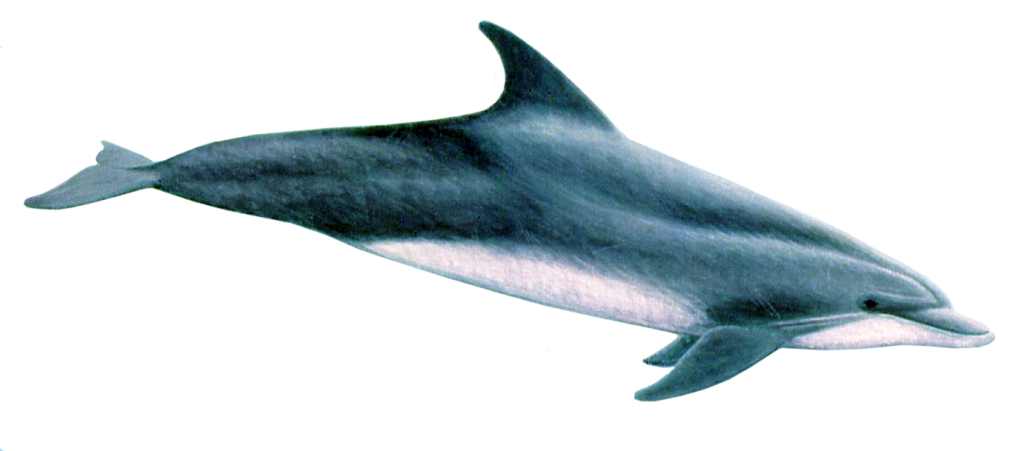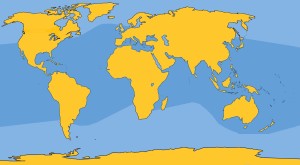 Family: Delphinidae
Family: Delphinidae
Genus: Tursiops
Species: T. Truncatus (Montague, 1821)
Taxonomic Note: A variety of taxonomic labels exist for bottlenose dolphins found in different parts of the world. The name Tursiops truncatus encompasses all of them in a general sense. However, many researchers believe that the size, physical appearance, color, and slight physical variations are dramatic enough to warrant at least two more distinct species, although perhaps subspecies classification would be more in line with the differences. These are the North Pacific bottlenose dolphin Tursiops gilli, and the Southern Hemisphere bottlenose dolphin, Tursiops aduncus. References to other populations of bottlenose dolphins that are occasionally used can generally be considered to be within Tursiops truncatus.
Perhaps, the best known of all cetaceans, the bottlenose dolphin is the species most commonly kept in oceanaria and research facilities. Its brain is larger than a human’s. While capturing dolphins and whales remains a highly controversial issue, when in captivity bottlenose dolphins are curious, alert, cooperative animals, friendly toward humans and other dolphins alike. While they are very wary and difficult to capture, they seem to adapt readily once caught and have invented complex behavioral patterns of their own. In the wild they are accustomed to shallow water and have been seen many times riding the surf.
Physical Description: Theirs is generally considered to be the typical Delphinidae body form. The body is long and somewhat stocky. The melon is well defined where the beak meets the forehead. The lower jaw extends beyond the upper jaw, curving slightly upward at the tip.
Color: Dark gray dorsally to lighter gray on the flanks and white or near pink on the ventral region.
Fins and Flukes: A prominent falcate dorsal fin is located at the mid-back region. The medium-sized flippers are well spread and somewhat rounded at their tips, with a well-defined median notch.
Length and Weight: This dolphin reaches 13 ft (4 m) and 1,450 lb (650 kg). Some authorities propose a smaller form which reaches 9.75 ft (3 m).
Teeth: There are 18 to 26 small, sharp, conical teeth in each side of the upper and lower jaws.
Feeding: Small fish, eels, catfish, mullet, and squid.
Breathing and Diving: When swimming, bottlenose dolphins rise to the surface to breathe every 15 to 20 seconds, although they can remain underwater for at least several minutes while riding the bow-wave of passing ships.
Mating and Breeding: After a one year gestation period, 35 to 50 in (90 to 130 cm) calves are born between February and May — and possibly between September and November — in Florida waters. Lactation lasts 12 to 18 months. Sexual maturity is reached at 10 to 12 years in males, 5 to 12 in females. Females are thought to be capable of up to 8 births over a lifetime, at 2 to 3 year intervals.
Herding: Usually several hundred, broken into pods of about a dozen. Smaller herds of up to 40 are often observed off Florida. Calves leave moms after several years and form their own groups. At 6 or 7 years of age they leave these groups and return to the group of their mothers. Males leave their juvenile group at about 10 years of age, forming lifelong bonds with other males.
Distribution: Worldwide in temperate and tropical waters.
Migration: No information available.
Natural History Notes: “Babysitting” behavior has been observed, in which another adult attends the infant of a female while she is out feeding. The lifespan is believed to be 35 years or more.
BOTTLENOSE DOLPHIN DISTRIBUTION







